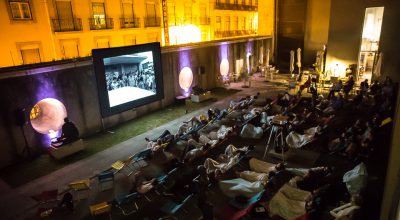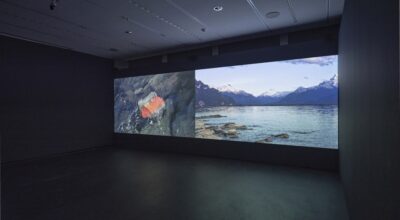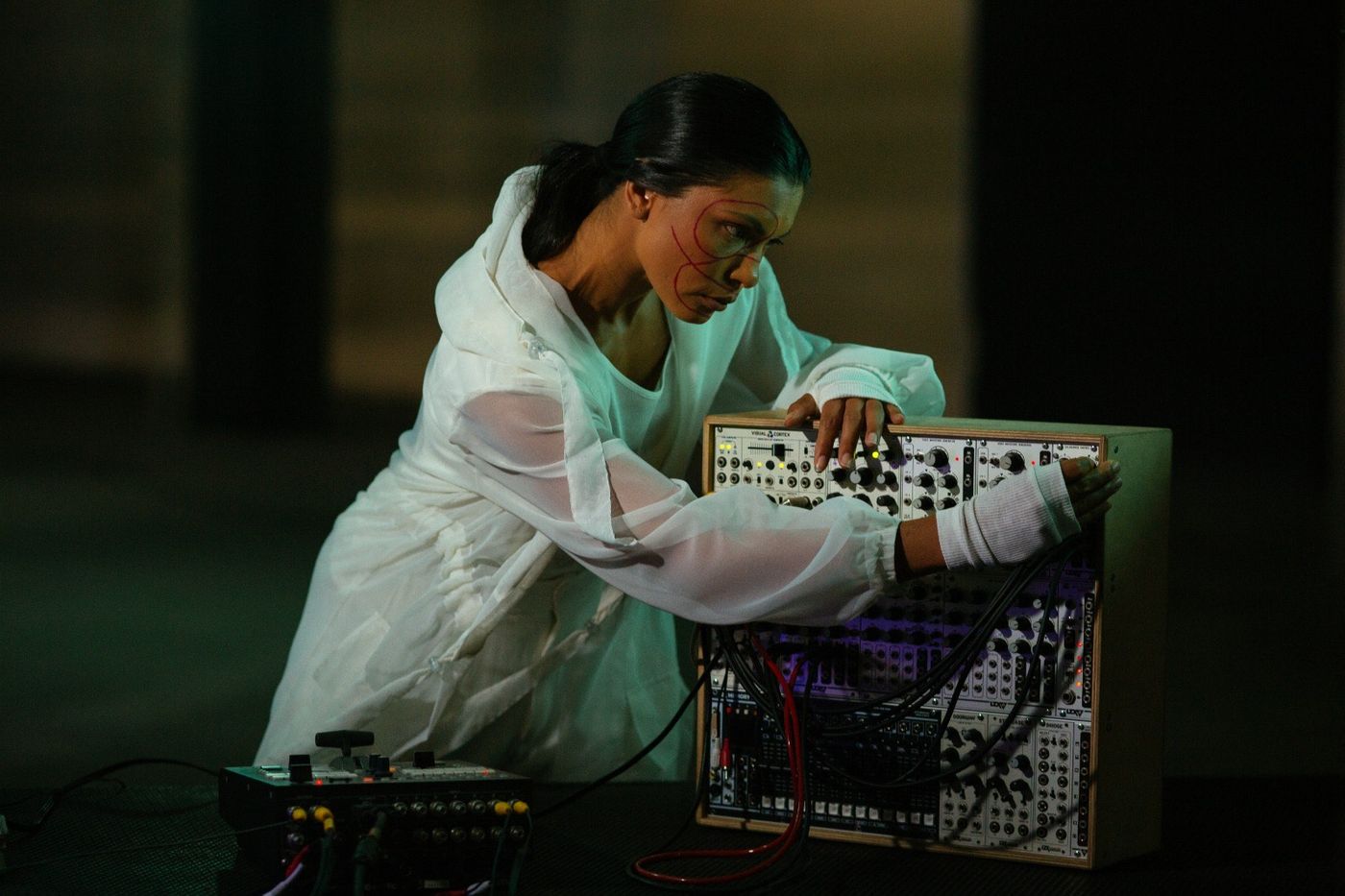
ZAHY TENTEHAR. MÁQUINA ANCESTRAL: UREIPY
Canal Projects, a new institute of contemporary art in New York, presents a new film commission by the Indigenous artist Zahy Tentehar titled Máquina Ancestral: Ureipy (2023). Zahy Tentehar is a multidisciplinary artist, filmmaker, and activist from the Tentehar-Guajajara peoples in the state of Maranhão in the Northeast of Brazil.
Máquina Ancestral: Ureipy is a performance and science-fiction short film that proposes reflections on the loss of our senses and is motivated by our need to change our reality. In the video a differently-abled character called «robotic entity» travels to an unidentified space in search of its identity, which was lost in time.
Evermore aware of the failures and perhaps even ruination of the human condition, the robotic entity refuses to succumb to the loss. Throughout the film, the entity instead seeks to redeem the human species by rescuing its inherited millenarian knowledge as it searches for its own ancestrality as a technology of resistance and survivance.[1]
Throughout her video practice, Tentehar has spoken about the Guajajara social movement known as the Guardians of the Forest, a group that inhabits and protects Arariboia Indigenous Land located in the north-eastern edge of the Amazon rainforest.
Although only officially recognized as a social movement until 2013, the Guardians of the Forest have protected the rainforest from state targeted killings, invasion by loggers, land grabbers, and drug traffickers for decades.[2]
In fact, the autonomous volunteer organization has been active for over 500 years, fighting off missionaries and colonizers from their land long before any formal recognition. In recent years, however, the Guardians of the Forest have been involved in violent confrontations against state-sanctioned private interests that have been systematically assassinating Guajajara tribal leaders.[3]
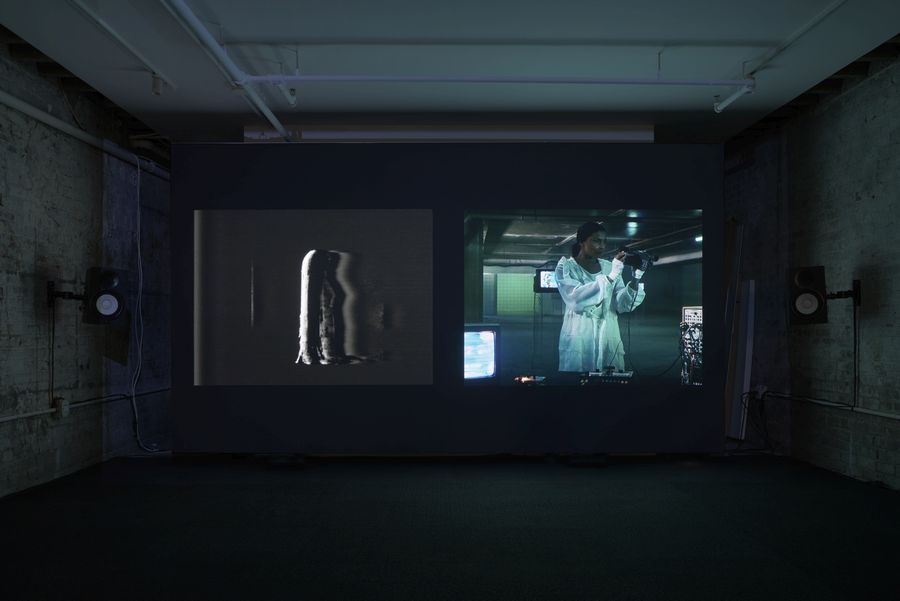
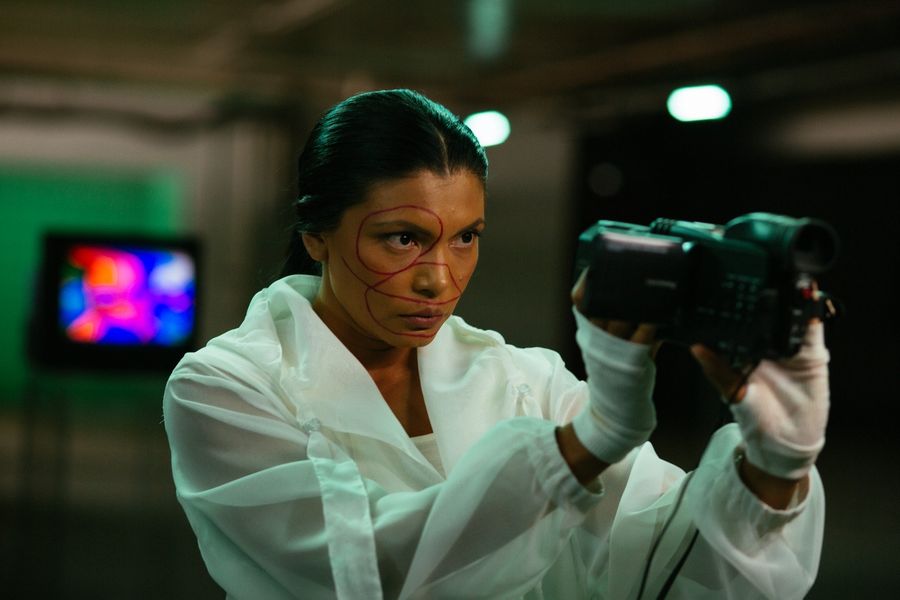
The attacks have mobilized many people across different Guajajara tribes towards a more forceful defense of their land, which spans over four-hundred thousand hectares and is shelter to over twelve thousand Indigenous peoples.[4]
In face of increased persecution, violent dispossession, and ecological exploitation faced by native communities in Brazil, Tentehar has dedicated her artistic practice to drawing special attention to the struggles for land rights and sovereignty of the Guajajara peoples.
Her essayistic and experimental videos are spoken in Ze’eng Eté—a dialect of the Tupi-Guarani trunk- and raise critical questions about the value of western technologies and ideas of progress.
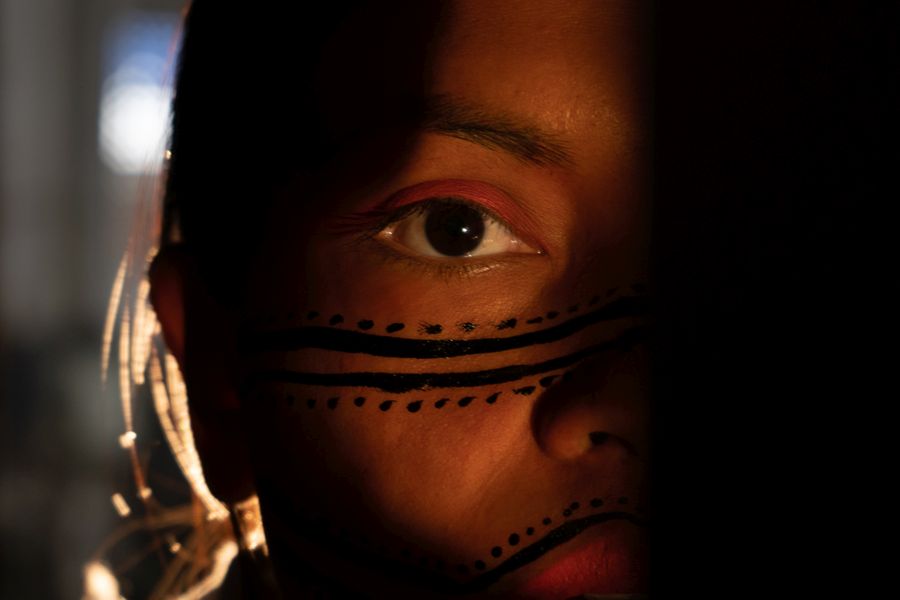
Máquina Ancestral: Ureipy is a continuation of Tentehar’s short film Karaiw a’e wà (The Civilized, 2022). In Karaiw a’e wà the artist presents a technocratic apocalyptic scenario where the invention of civility is put to the test along with the ideals of progress, intellectuality, and modernization.
The short is motivated by the desire to combat stereotypes, recentering on Tentehar-Guajajara cosmologies as a form of relationality that is attuned and interconnected with humans and non-human forms of intelligence. Karaiw a’e wà considers Indigenous space-time travel as a response against the negation and disavow of Indigenous knowledge, technologies, and forms of life.
Máquina Ancestral: Ureipy (2023) premiered at Canal Projects as part of Back to Earth: Contested Histories of Outer Space Travel (May 4 – July 29, 2023), an exhibition and discursive program curated by Sara Garzón that seeks to critically engage mainstream narratives of space exploration.
The program features films by Nuotama Bodomo (Ghana), Subash Thebe Limbu (Nepal), Zahy Tentehar (Tentehar-Guajajara, Brazil), and Alice dos Reis (Portugal).
Canal Projects, 351 Canal Street, New York, NY
[1] Anishinaabe scholar Gerald Vizenor termed Survivance in 1994 to speak both of Indigenous survival and resilience. Based on these principles, we orient our narrative towards frameworks of co-adaptation, mutuality, and solidarity to overcome crisis. Gerald Vizenor, Survivance: Narratives of Native Presence (Lincoln: Nebraska University Press, 2008).
[2] Carol Marçal, “The Life and Death of the Guajajara,” Green Peace, 8 November 2019. www.greenpeace.org/international/story/26403/the-life-and-death-of-the-guajajara/
[3] Libardi, Manuella, «Amazon Heroes Who Don’t Give Up,» Open Democracy, 16 September 2020. www.opendemocracy.net/en/democraciaabierta/guardians-of-the-forest-heroes-who-dont-give-up/
[4] Manuella, «Amazon Heroes Who Don’t Give Up,» Open Democracy.
También te puede interesar
Silvia Rivas:fuerza Diagonal
Las videoinstalaciones que integran la muestra "Fuerza Diagonal", de Silvia Rivas, recorren la cornisa de lo inminente. Cruzando distintos soportes y materialidades, las obras retoman la investigación iniciada por la artista en su serie...
Fuso | Anual de Video Arte Internacional de Lisboa
Entre el 22 y 27 de agosto se celebró la 9ª edición de FUSO | Anual de Video Arte Internacional de Lisboa, con una programación exclusiva seleccionada por los curadores Solange Farkas, Jean-François Chougnet,...
IGNACIO ACOSTA’S ARCHAEOLOGY OF SACRIFICE
In line with Frederic Jameson’s musings on the relationship between utopia and science fiction, and seeing the latter’s strength in failing to accurately imagine a real future, "Archeology of Sacrifice" similarly plays with our...


